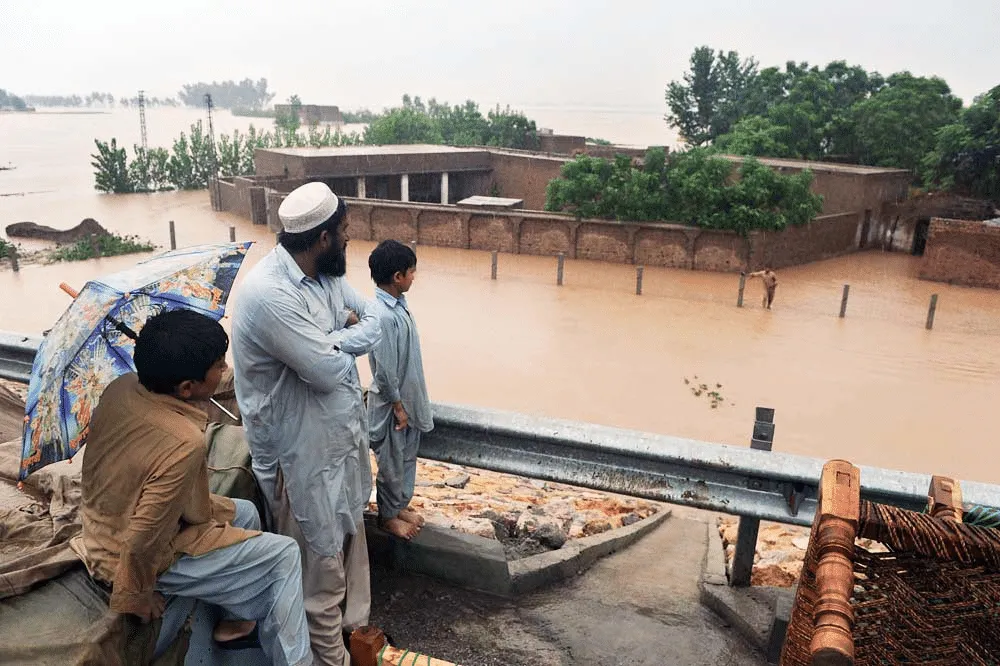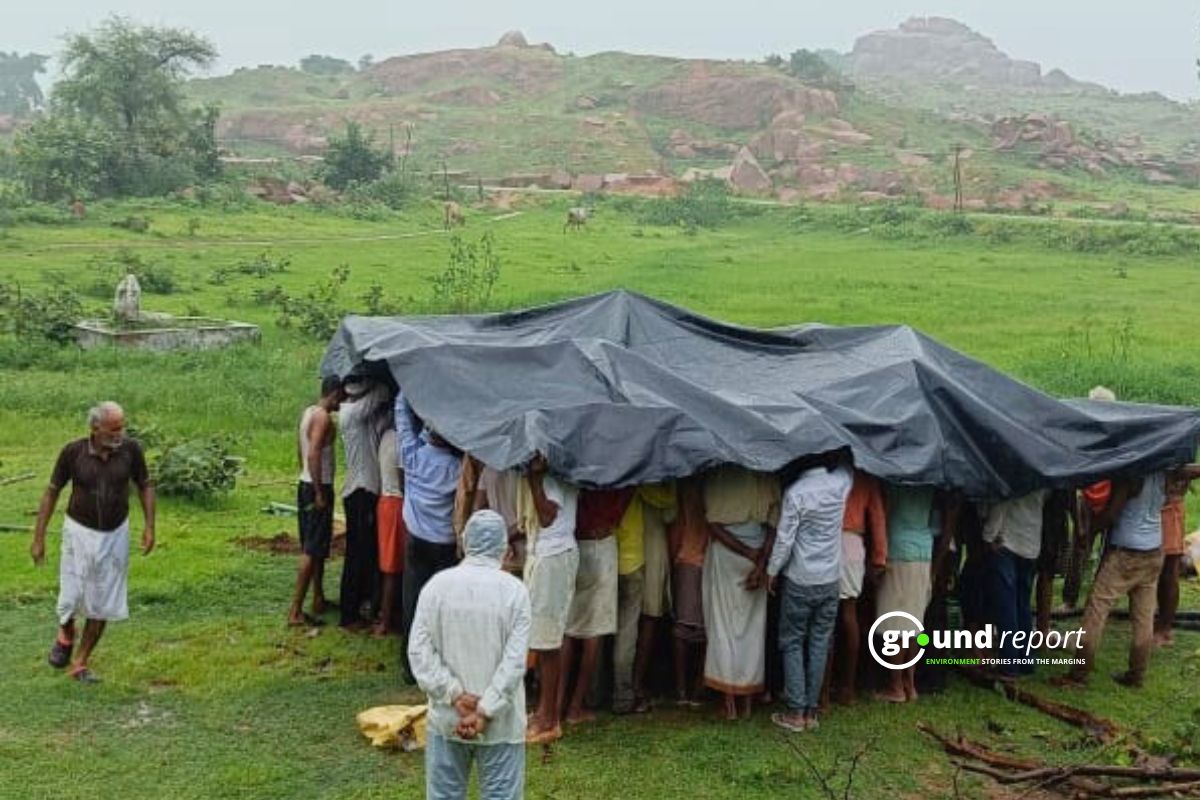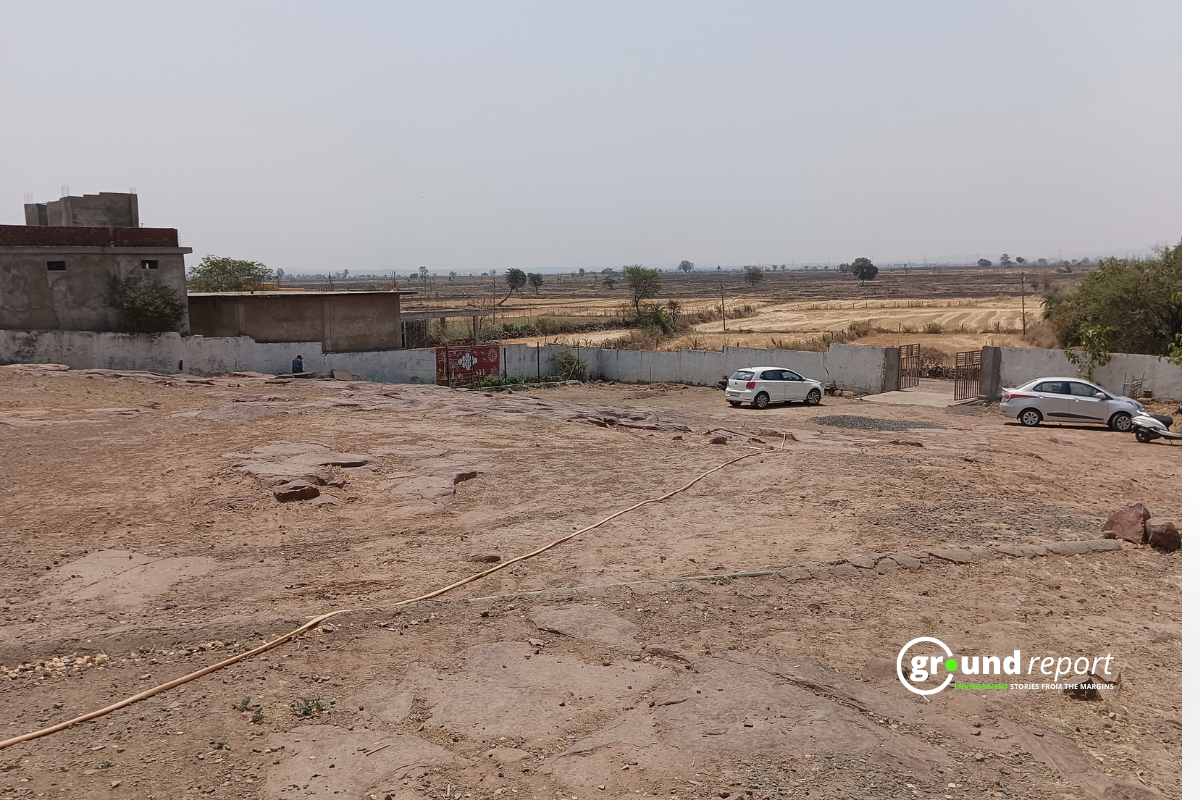The landscape of Pakistan is no longer what it used to be. Now there are no houses where there used to be, and miles of puddles of water have appeared, forming new rivers where there used to be asphalt. While other places on the planet are experiencing episodes of extreme drought, the country is sinking after a new season of floods.
The team, which includes scientists from Pakistan, India, the Netherlands, France, Denmark, South Africa, New Zealand, the US, and the UK, used published and peer-reviewed methods to conduct an attribution study of events.
The researchers focused on two aspects of the event: the annual maximum of the 60-day mean precipitation from June-September over the Indus River basin, and the annual maximum of the 5-day mean precipitation from June-September over the southernmost provinces of Sindh and Baluchistan.
Climate change in Pakistan
Although the country usually receives heavy rains from June to September, the extreme rains it has faced in recent months have increased by between 50% and 75%. So suggests a new World Weather Attribution (WWA) study, which has also shown that Pakistan has received more than 3 times its usual rainfall in August, making it the wettest August since 1961.
The Asian country is used to heavy rainfall, but this August has been the wettest since 1961. This new catastrophe has affected 1.7 million households, especially people who live in agriculture and women.

It is not the first time that this international body has shown that climate change influences extreme weather events. Other analyzes concluded that the chances of heat waves in India and Pakistan earlier this year increased due to this problem. The UK suffered from the same problem this summer and Brazil was also flooded in May.
It is precisely the south of the Pakistani territory, characterized by an arid climate, which has suffered this new disaster like no other area. The provinces of Sindh and Balochistan have been the most affected. Both have experienced the wettest August on record, with deluges 7 to 8 times more powerful than usual.
Pakistan has a significant history of extreme events. The worst flooding occurred in 2010. On that occasion, the losses were considerable: it affected more than 15 million people, caused more than 1,700 deaths and damaged 2.9 million homes and 80% of the national food reserve. In total, the rains generated damages of 9.7 billion dollars in 46 of the 135 districts of the country. The magnitude of this year’s destruction, which has yet to be fully accounted for, is expected to exceed that of 12 years ago.
Heavy rains destroyed 1.7 million homes
So far, the heavy rains have destroyed 1.7 million homes and killed nearly 1,500 people. Damage is likely to exceed preliminary estimates of about $30 billion, and more economic disruption is sure to come in the coming months, adding to existing food shortages stemming from the Ukraine war. The effects of the floods are also perceived in the health of the population since the stagnant waters of the precipitations favour the spread of infectious diseases such as cholera and malaria.
In March and April 2022, Pakistan suffered another extreme weather: an unusual heat wave swept over the territory, raising thermometers to over 50ºC in some parts of the country. Countryside and forests burned, wheat and cattle were lost, and the 7,000 glaciers that feed the Indus River rapidly melted.

For the study of this new threat, the group of specialists of the WWA has had an added difficulty. The region studied is in the western part of the monsoons, where the trend is not always evident due to the variability from year to year and the different zones. The country is also “in a place where two precipitation-bearing meteorological systems end: the monsoon rains from the east and southeast during the summer, and the disturbances of the western Mediterranean during the winter,” the team of specialists points out.
Even so, the results suggest that climate change has influenced the recent floods in the country, despite not knowing to what extent they have done so or will do so in the future. “Although it is difficult to give a precise figure on the contribution of climate change, the footprints of global warming are evident,” says Friederike Otto, Senior Lecturer in Climate Science at Imperial College London’s Grantham Institute and co-founder of WWA.
Factors that go unnoticed
Of course, no country is prepared for what Pakistan has suffered in recent weeks. Much less twice as intensely. That is why the episode has made headlines around the world. However, there are other causes that have also determined and even aggravated the dangers faced by the Pakistani population.
The Indus River fuels the economy: it provides water for almost 90% of food production in Pakistan, and 39% of the country’s workforce is engaged in agriculture. Although the losses have been felt across the country, in this battle against the weather there have been people who have lost more than others. Mainly, the floods have affected rural farmland, where more than 60% of the population lives.

Another inequality comes into play when it comes to loss: women, relegated to the role of caregivers for the elderly and children, are more vulnerable to the dangers of flooding due to their lack of mobility compared to men. In addition, gender segregation influences the refusal to evacuate to a safe place. And, if they decide to do so, they expose themselves to physical violence on the spot.
Yes, climate change has influenced flooding, but also “the proximity of human settlements, infrastructure and agricultural land to floodplains, inadequate infrastructure, limited ex-ante risk reduction capacity, a management system of obsolete rivers, the underlying vulnerabilities derived from the high rates of poverty and socioeconomic factors, and the current political and economic instability”, the specialists warn.
Emergency funds
As humanitarian organizations scramble to find emergency funds, a familiar face has returned to the scene. The International Monetary Fund (IMF) recently approved a rescue request with the delivery of 1,100 million dollars to the country. At first glance, this may seem vital to Pakistan’s recovery, but the accumulation of additional debts in a country already caught in the grip of a financial crisis will only bring about a new disaster.
Empirical evidence overwhelmingly supports the idea that much public debt hurts economic growth. In many cases, the impact of public debt on activity increases as debt increases. Pakistan’s high level of indebtedness has made it more vulnerable to economic crises and has weakened the country politically in the face of powerful external lenders. It has also drastically reduced Pakistan’s ability to invest in education and health care or its infrastructure.

If the West intends to support Pakistan in this crisis, it must implement a series of measures that address the magnitude of the damage inflicted by the North on the South since the industrial revolution. Initially, this should include a full cancellation of debt, as well as a significant increase in climate finance to help communities adapt to the impacts of climate change.
Furthermore, many countries vulnerable to climate change, such as Bangladesh, Ethiopia and Tuvalu, are now asking rich countries to compensate them for the catastrophes they face.
This phenomenon, often called “Loss and Damage”, is not yet officially on the agenda of the United Nations Climate Change Conference (COP) negotiations. On many occasions, countries vulnerable to climate change have demanded climate compensation from rich countries and the companies that have created climate chaos, and on each occasion, they have been ignored. At COP27, concrete progress must be made in these discussions.
Keep Reading
Part 1: Cloudburst in Ganderbal’s Padabal village & unfulfilled promises
India braces for intense 2024 monsoon amid recent deadly weather trends
Support us to keep independent environmental journalism alive in India.
Follow Ground Report on X, Instagram and Facebook for environmental and underreported stories from the margins. Give us feedback on our email id greport2018@gmail.com.
Don’t forget to Subscribe to our weekly newsletter, Join our community on WhatsApp, and Follow our YouTube Channel for video stories.









